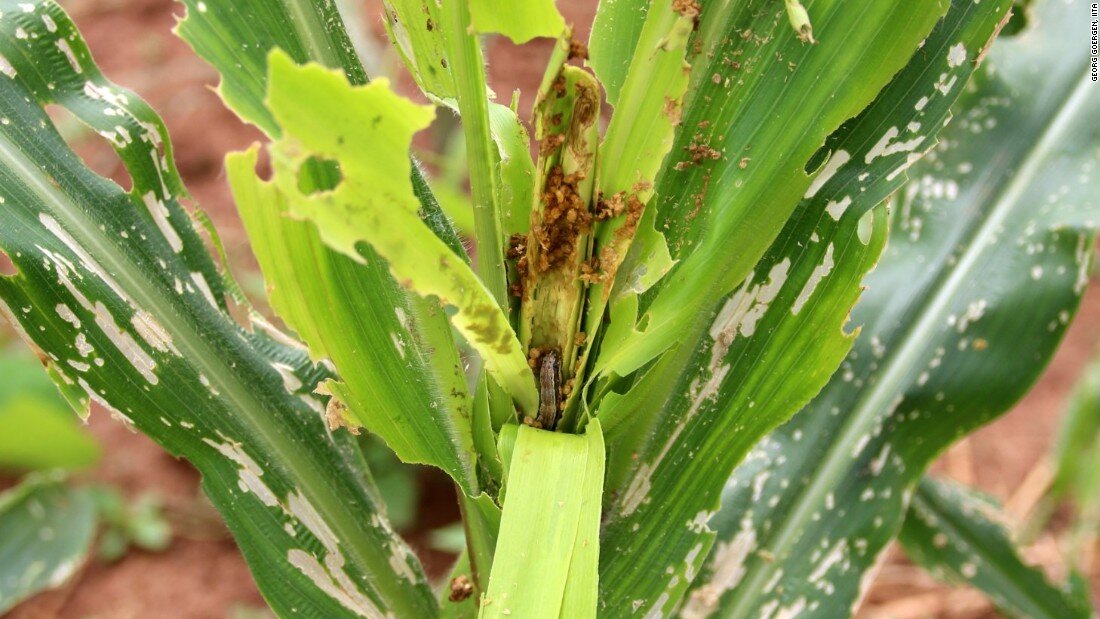
Malawi has been told to raise awareness to educate farmers on how to detect armyworms early in order to fight the pest.
Vice president for Alliance for Green Revolution in Africa (AGRA) Dr Joe Devries said the farmer should be central to the fight against armyworms.

Devries was speaking when he and his team visited Malawi’s Felix Jumbe of Peacock Seeds, a hybrid seed grower in Salima, Malawi.
In the 2016/17 agricultural season, armyworms destroyed crops in the country and at Peacock seeds farm, virtually every plant in every row of the 20 hectares hybrid section of the farm was severely damaged.
Devries said curbing the damage ahead, therefore, requires concerted action, in which the farmer is placed at the heart of the fight.
“It is vital to generate a massive awareness campaign to educate farmers on early detection signs, so that infestations are tackled early and at speed.
“To be effective, farmers also need to know exactly what they need to do – which pesticides are effective, and how they need to be applied. They also need to access supplies, and may require support in applying control measures rapidly enough,” Devries told Malawi24.
Devries said the scale of the damage in Malawi prompted AGRA to issue a call to action that has since drawn together scientists from across the agricultural sector.
However, the worm has continued to spread, now to Burundi, Rwanda, Uganda, Kenya, and most recently to Ethiopia and the Democratic Republic of Congo.
It has so far destroyed over 300,000 hectares of maize across Africa, which is the staple food to more than 200 million people in the region.
Kenya’s Trans Nzoia County, considered the country’s food basket, has, alone, lost 103,876 hectares of maize, in destruction that is set to cause serious maize shortages ahead and comes hard on the heels of a drought-triggered shortfall.
Authorities have reported that in Rwanda, the pest has infested maize and sorghum crops across a full quarter of the country’s cropped land.
The worm has similarly infested 90,000 hectares of maize in Zambia, 17,000 hectares in Malawi, 130,000 hectares in Zimbabwe, approximately 50,000 hectares of maize and millet in Namibia, over 40 percent of the crops in Uganda, and over 20,000 hectares of maize in northern and south-eastern Tanzania.
The Centre for Agricultural and Biosciences International (CABI) estimates the losses to Africa’s maize could cost the continent $3bn in the coming year.
Meanwhile, African governments are urgently identifying capacity and building strategic alliances with key stakeholders in the agricultural sector to achieve both short and long-term action plans to address this pest.















Simple to fight
Ok bola apa nanga ma popo omwe agwidwaso ndi ubwinyawa nde atani sopano coz zikhoza kumatipasa affect ifeyo mmatupi mwathu